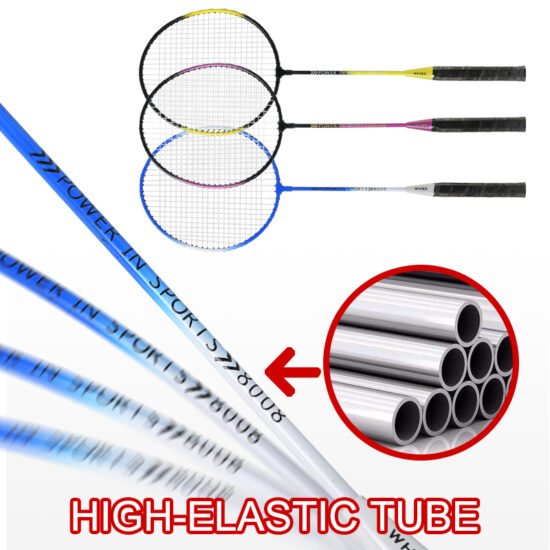jay@nbdho.com
The Science Behind Racket Design and Aerodynamics
Here’s an SEO-optimized blog post draft for “The Science Behind Racket Design and Aerodynamics”:
Title: The Science Behind Racket Design and Aerodynamics
Meta Description: Explore how advanced racket design and aerodynamics improve badminton performance by enhancing swing speed, control, and power.
🏸 Introduction
Badminton rackets have evolved significantly thanks to innovations in design and aerodynamics. These scientific principles shape how rackets cut through the air, affecting swing speed, control, and shot power. In this article, we’ll dive into the fascinating science behind racket design, explaining how aerodynamics plays a crucial role in optimizing your game.
1. Understanding Aerodynamics in Badminton Rackets
Aerodynamics is the study of how air interacts with objects in motion. For badminton rackets, minimizing air resistance (drag) helps players swing faster and with less effort, leading to quicker reactions and more powerful shots.
2. Key Design Elements Influencing Aerodynamics
a. Frame Shape and Profile
- Streamlined frames reduce drag by allowing air to flow smoothly around the racket.
- Rounded or tapered edges cut through the air more efficiently than flat surfaces.
- Some modern rackets feature aero-dynamic cutouts or holes in the frame to reduce weight and drag.
b. Shaft Thickness and Flexibility
- Thinner shafts encounter less air resistance, allowing faster swings.
- Shaft flexibility influences how energy is transferred on impact, affecting shot power and control.
c. String Pattern and Tension
- A denser string pattern can slightly increase air resistance but offers better control.
- String tension balances power and accuracy, affecting how the shuttlecock flies after impact.
3. Materials Used in Aerodynamic Rackets
- Carbon fiber composites are lightweight and strong, enabling thin, aerodynamic frames without sacrificing durability.
- Graphene technology enhances frame stiffness while maintaining light weight for better swing speed.
- Advanced materials allow designers to optimize racket shape and weight distribution for aerodynamic efficiency.
4. Benefits of Aerodynamic Rackets
- Faster swing speed: Less air drag means quicker racket movement.
- Improved maneuverability: Lightweight and balanced design for rapid changes in direction.
- Enhanced shot power: Efficient energy transfer from racket to shuttlecock.
- Reduced fatigue: Players expend less energy swinging, extending performance during long matches.
5. How Aerodynamics Influences Playing Style
| Playing Style | Aerodynamic Benefits |
|---|---|
| Aggressive Smashers | Faster swing speeds for powerful smashes |
| Defensive Players | Quick maneuverability for net play |
| All-Around Players | Balanced speed and control |
🏸 Conclusion
The science of aerodynamics and innovative design continues to push badminton rackets to new performance heights. Understanding how these factors work helps you choose a racket that complements your style and maximizes your game. In 2025, aerodynamic rackets offer players faster swings, better control, and less fatigue — the perfect combo for winning on the court.
🎯 Embrace the science. Elevate your play.
Suggested SEO Keywords:
badminton racket aerodynamics, aerodynamic racket design, carbon fiber badminton racket, racket swing speed science, badminton racket technology
Would you like a video explanation or 3D model showing aerodynamic features of top rackets?





